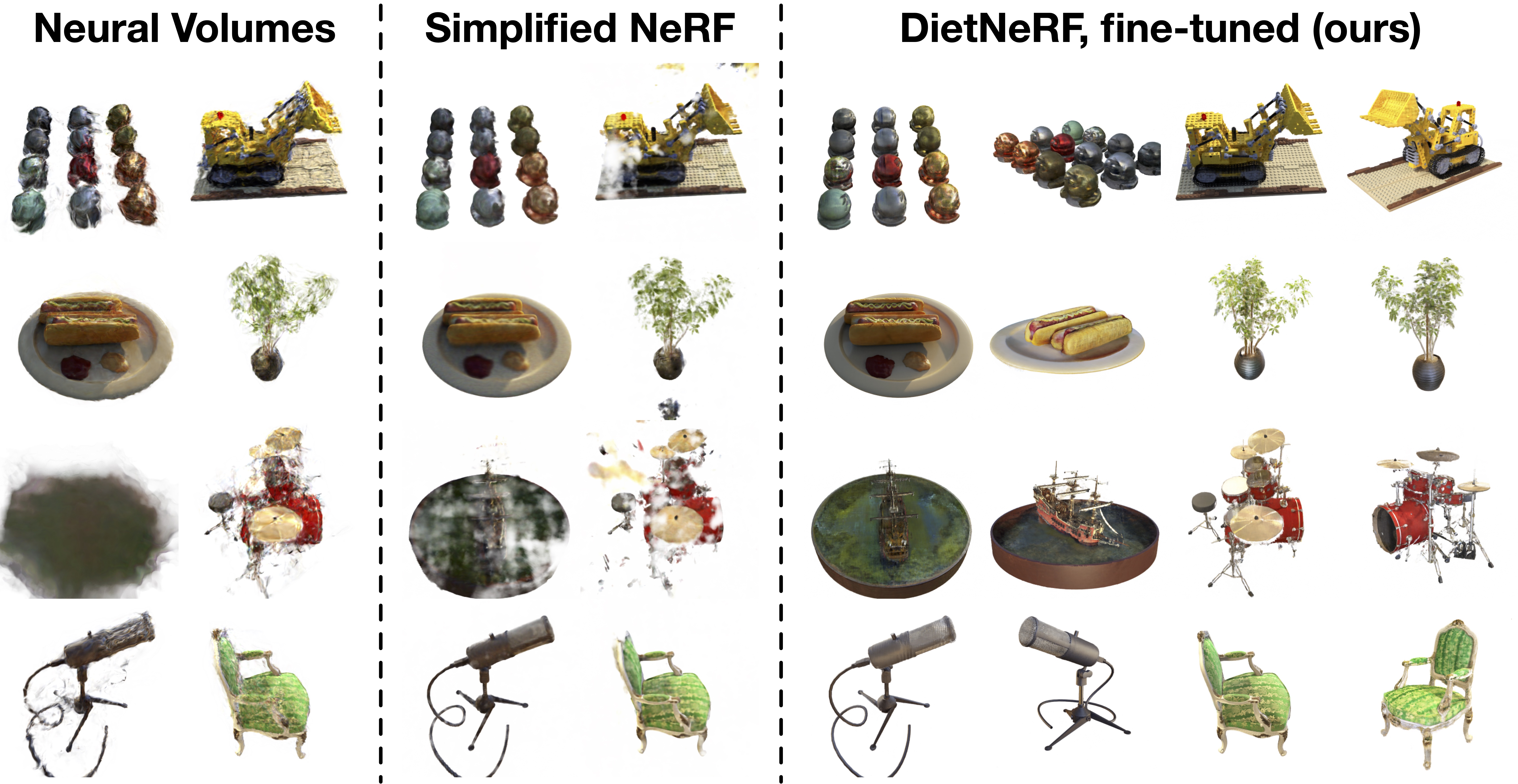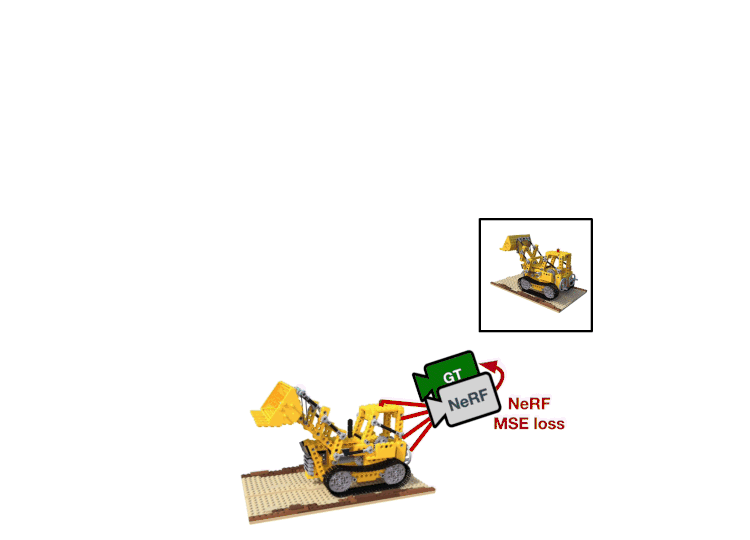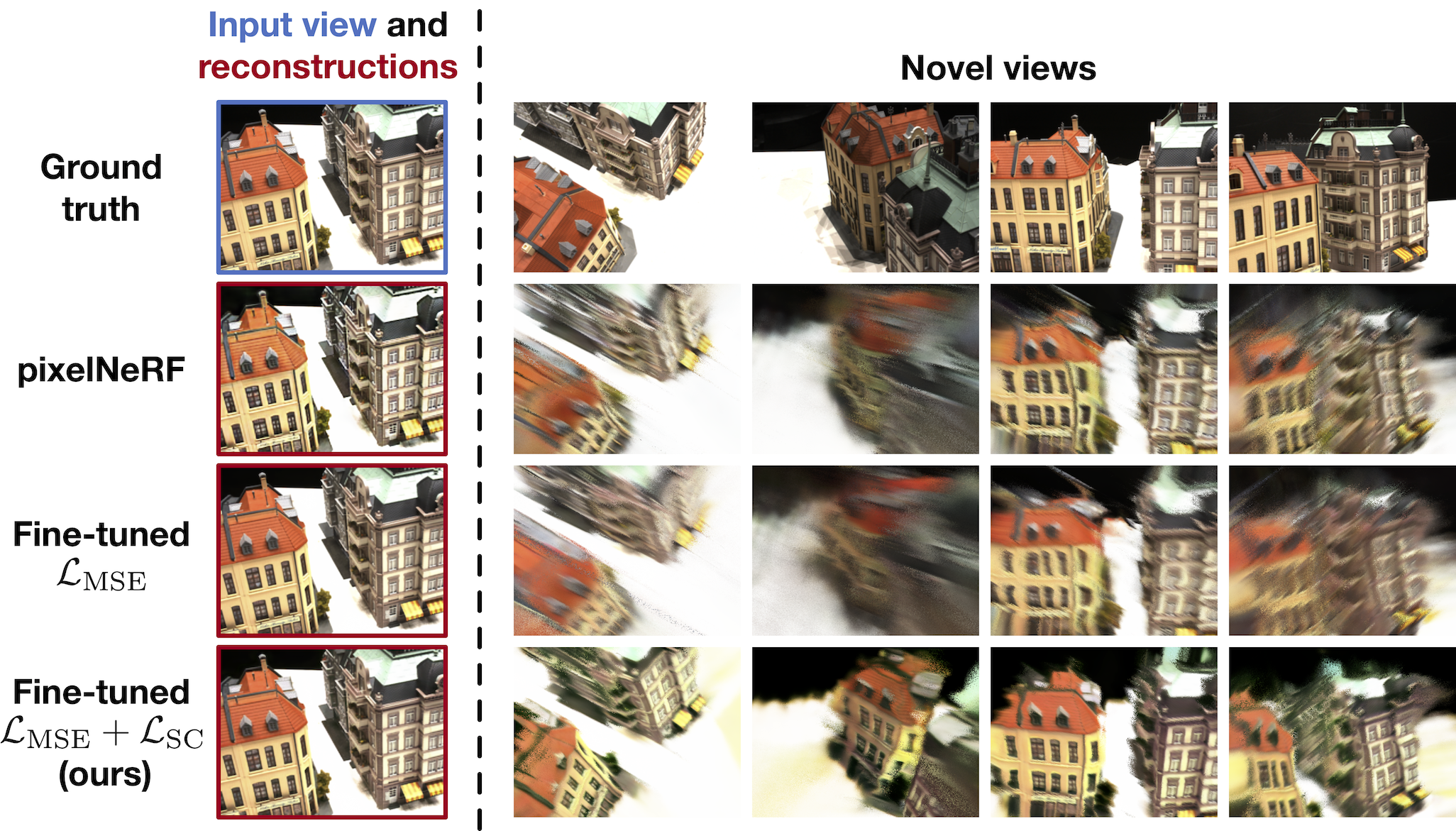Abstract
We present DietNeRF, a 3D neural scene representation estimated from a few images.
Neural Radiance Fields (NeRF) learn a continuous volumetric representation of a scene through multi-view consistency, and can be rendered from novel viewpoints by ray casting. While NeRF has an impressive ability to reconstruct geometry and fine details given many images, up to 100 for challenging 360° scenes, it often finds a degenerate solution to its image reconstruction objective when only a few input views are available. To improve few-shot quality, we propose DietNeRF. We introduce an auxiliary semantic consistency loss that encourages realistic renderings at novel poses. DietNeRF is trained on individual scenes to (1) correctly render given input views from the same pose, and (2) match high-level semantic attributes across different, random poses. Our semantic loss allows us to supervise DietNeRF from arbitrary poses. We extract these semantics using a pre-trained visual encoder such as CLIP, a Vision Transformer trained on hundreds of millions of diverse single-view, 2D photographs mined from the web with natural language supervision. In experiments, DietNeRF improves the perceptual quality of few-shot view synthesis when learned from scratch, can render novel views with as few as one observed image when pre-trained on a multi-view dataset, and produces plausible completions of completely unobserved regions.





 Semantic consistency improves perceptual quality from a single input view. Fine-tuning pixelNeRF with NeRF's MSE loss slightly improves a rendering of the input view, but does not remove most perceptual flaws like blurriness in novel views. Fine-tuning with both MSE and semantic consistency losses (DietPixelNeRF, bottom) improves sharpness of all views.
Semantic consistency improves perceptual quality from a single input view. Fine-tuning pixelNeRF with NeRF's MSE loss slightly improves a rendering of the input view, but does not remove most perceptual flaws like blurriness in novel views. Fine-tuning with both MSE and semantic consistency losses (DietPixelNeRF, bottom) improves sharpness of all views.